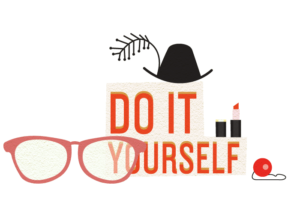We’ve all been there – you’re trying to get all your ducks in a row (and keep them there!), make all of your organizational tools work, and handle all of the paperwork burden of running a new small business, while delegating to your people and trying to craft an ongoing business plan.
It’s exhausting, right? And there’s a lot more in the mix — with so many businesses investing in fancy technology, becoming ultra-competitive in their processes, you’re probably feeling like if you don’t lunge forward, you’re going to fall behind.

Yes, anybody can start a small business — but in my opinion, there’s just not quite enough guidance, and that’s one big reason why not everybody can keep a business running. For instance, you’ve probably never heard of most of the stuff that’s going to save your small business in high school, or even in college. A lot of it is too new to be familiar to most of us.
The good news is that by just using some very simple business systems, you can put yourself in the driver’s seat and accomplish what you need to get done as a small business leader. One of these things is Customer Relationship Management software or CRM. These interfaces provide you with a way to stay on top of your clients and customers, while merging some of your business processes to work efficiently and avoid burnout.
Here are some of the ways I have found CRM works best for companies just like yours.
- Never Forget a Name
You know how you are sometimes stuck, stuttering, when you encounter a client or somebody else in person? You just can’t remember his or her name, and it drives you nuts.
And there’s probably one guy in your sales department or office who calls every guy Jason and every girl Amy, and you can you see how abrasive this can be to the customers.
CRM offers you a way to put a name to a face with every call. That means on the phone you always know who you are talking to — and in person, you’ll have much more of an opportunity to remember the names, because you’ve seen them displayed on the screen so often. That’s one major part of how CRM is helping businesses look more professional and in touch.
- Use CRM with Vendors and Suppliers
Most of those people who are promoting the value of CRM talk about it in a sales context — but if you’ve seen this stuff work the way that I have, you’ll know that you can also use it to improve your supply chain and keep in touch with people who deliver you the materials you need for your business. Whether it’s pizza dough, lumber, uniforms or office supplies, each of your vendors and suppliers can have their own CRM profile, so you’re never left wondering how to get the next shipment that you’ll use for your business processes.
- Easily Access Customer Purchase History
This is a big one — in addition to names and other identifiers, CRM offers you a way to look at the history of your business operations at a glance.
One item here is the use of customer histories. With these screens, you can see just what someone has ordered in the past, which is often a pretty good predictor of what they want in the future.
This is big, because the alternative involves struggling with spreadsheets, penciling information into notebooks – (carpal tunnel syndrome, anyone?) — or dealing with clunky, outdated legacy software. All of these things can make you want to tear your hair out — I know, I’ve been there.
But with the most modern CRM interfaces, you get all of this information in one click. You don’t have to create it manually, it comes to you, and it saves you boatloads of time.
- Ease Into Big Data
This point applies to the above, and it also applies to that confidence I was talking about in the beginning.
Too many small business owners are, frankly, intimidated by new technology. There are a lot of reasons for that, and one is that big companies are using open source software like Hadoop to corral huge and unorganized data sets for all kinds of business intelligence. There’s a real feeling in the small business community that – “I just can’t do that!”
Don’t let yourself be taken in. You have another option. Instead of setting up an in-house IT department and hiring armies of coders, you can use vendor software, i.e. CRM, that is already built, and already able to channel the data you need into one display interface.
You don’t need a corporate data warehouse if you’re a small business, you just need a place where you can reference things like customer histories and the other kinds of data I mentioned above. So CRM can really be your savior in getting used to technology without jumping headfirst into the big data game, which is too much of an outlay for most small business leaders.
- Customized Solutions
Every industry is different, and your small business works within a particular context. Again, you don’t want to use a flamethrower on an ant. You want scalable technologies that you can handle on your own as one individual person, not software empires that require an executive summit to set up.

Here’s a tip for a general “containment strategy” – when talking to reps about CRM, ask for a focus on a user-friendly, resource-lean platform, not a “Cadillac” or “bells and whistles” platform that might strain your budget and your staff. For example, look for “one-click, one-screen” functionality where users don’t have to wade through an array of menus and add-ons to get that vital customer information.
Opt for the simplest, most easy-to-use small business CRM tools, and you’ll have what you need at your fingertips. Simple CRM platforms like StrideApp help small businesses to make headway in a data-centered, always-connected world without forcing entrepreneurs and startup leaders to become technology wizards.








